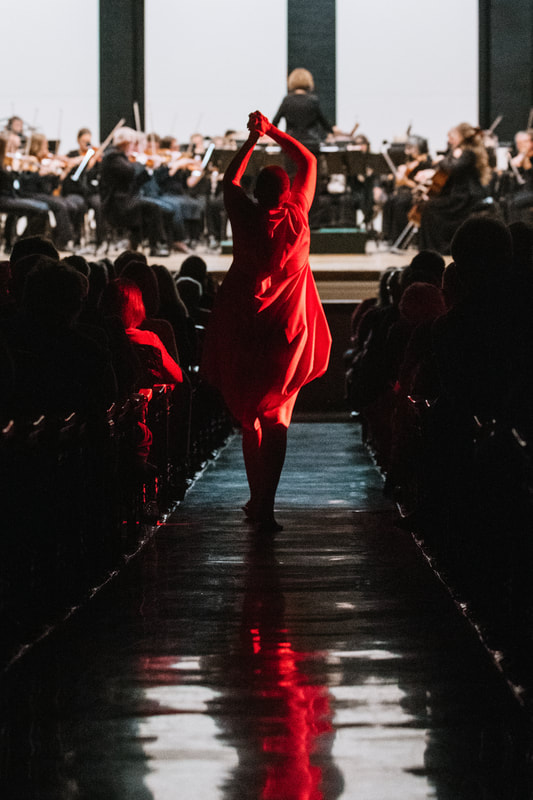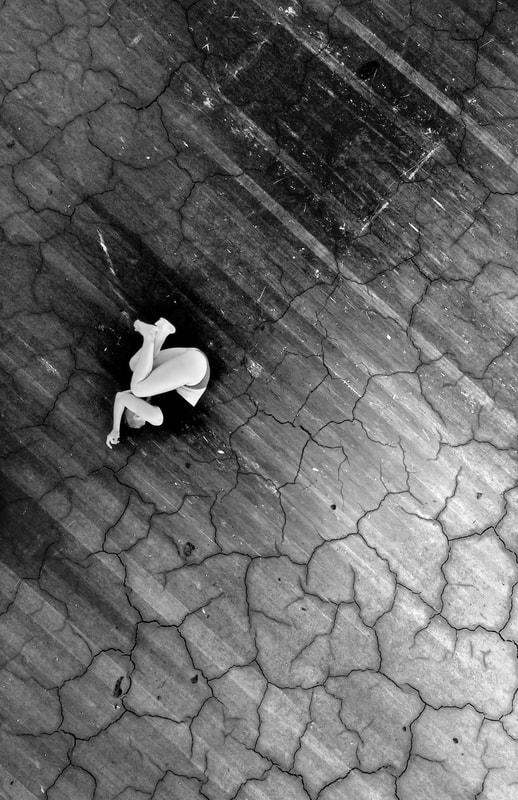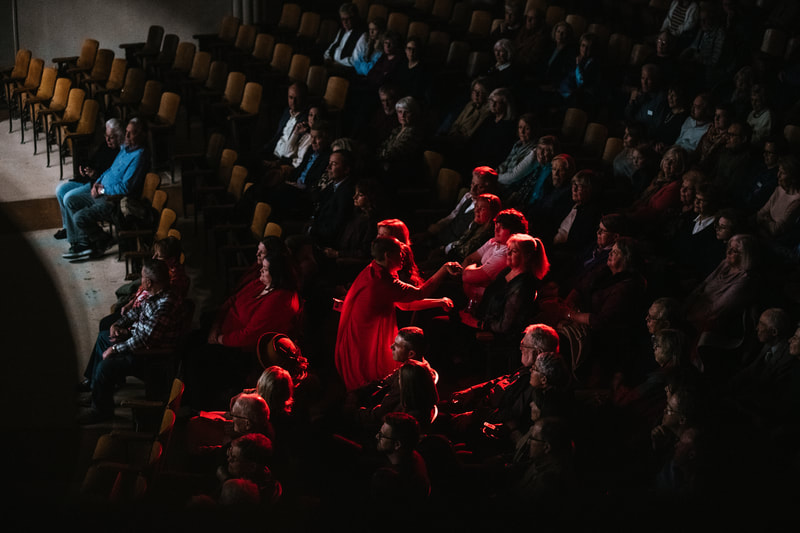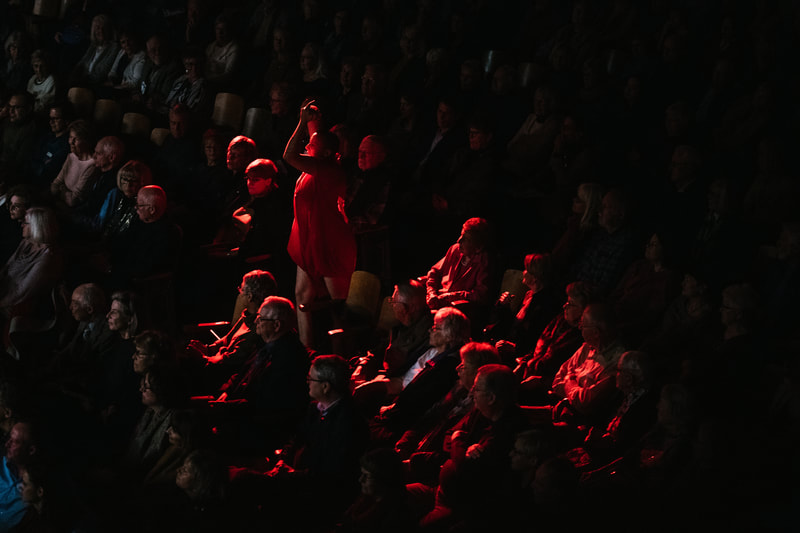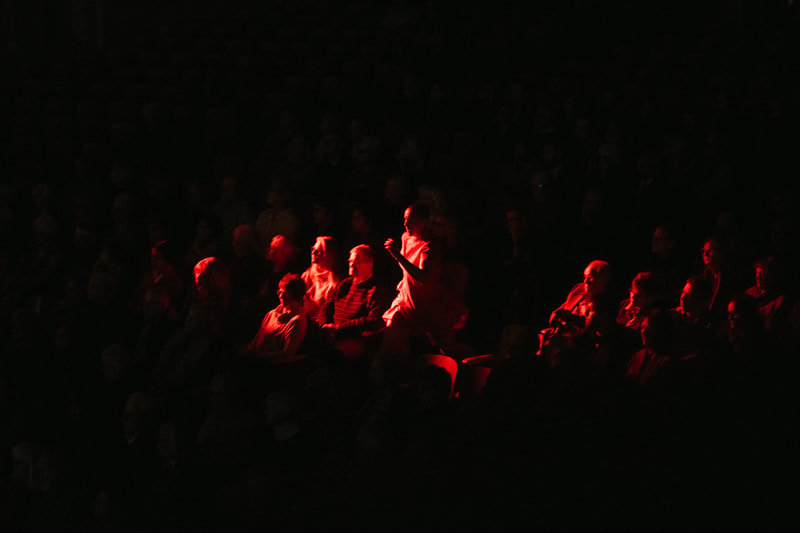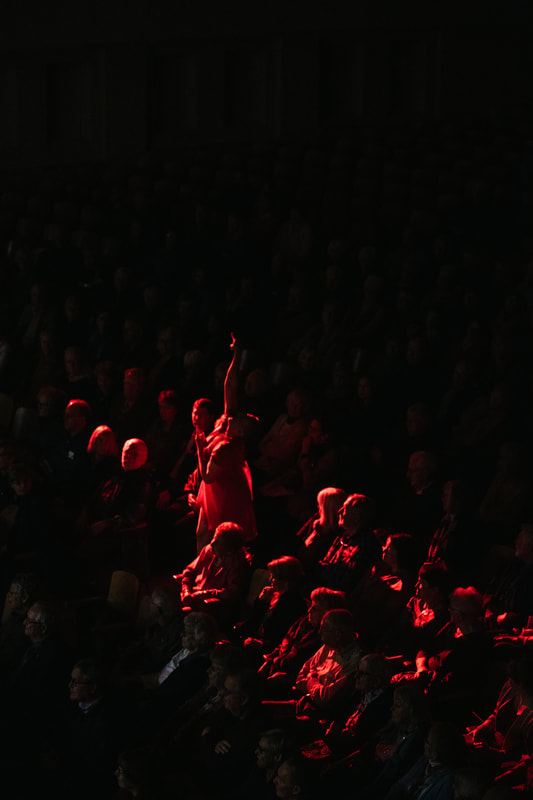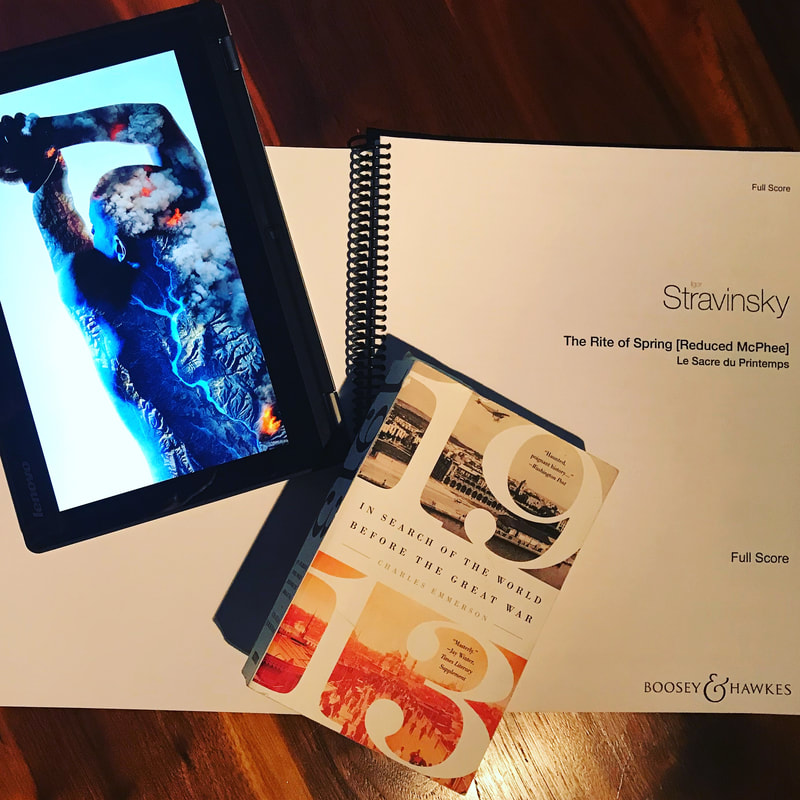Perhaps the best way to pay tribute to the disruptors and provocateurs of the Ballet Russes is with our own equally unabashed and avant garde approach.”
- Erica Gionfriddo
Re-(w)Rite began as an invitation from the Billings Symphony to collaborate on their 2019 season performance of Stravinsky's Rite of Spring. Knowing how challenging the score was for the symphony and the power in which the music alone carried, Krista wanted to keep the focus on the music, and respond to the historical context of the piece itself. Rather than filling the stage with dancers, in a modern retelling of an historic work, she envisioned a single soloist instead. A dance artist capable of holding the frequency of such an iconic work in their movement and rather dance for the symphony, partner with them.
Re-(w)riting such an iconic piece of music and performance did not mean rejecting historical contexts; as a dance scholar I am well versed in the lore of the Rite of Spring and its many iterations. But we did turn away from past narratives that no longer serve us; consciously stepping toward a new, yet unknown future. This meant not a re-stating of the music, but a “going with” that allows me to re-embody the power in Stravinsky’s chaos without drowning in it. Part of my practice will be to let the symphony move through me, not simply move with them.
- Erica Gionfriddo
|
The creative process was done remotely, which prior to the pandemic was not conventional, garnered an opportunity for the inquiries brought forth from the research to bleed into current contexts. Krista employed a system of creation for this project that investigated historical context, ecological inquiries, along with current cultural narratives as source material for professional dance artist Erica Gionfriddo to physicalize as part of a creative response to what is arguably Ballet Russes’ most complicated ballets. Erica Gionfriddo possesses an evocative and nuanced movement language that brought Stravinsky’s iconic work to a present pitch of seduction and urgency. Erica’s intellectual capacity to “stay with the trouble” and investigate the various contextual prisms Krista was sharing as source material created a "both/and" way of meeting the music. This process is often where potent inquiries about gesture and societal inquiries emerge and the conversations evolved to include both an established movement language and gestural patterning. Krista considers the artist's lived experiences as part of the creative process and integrated methods of guidance that were porous to both Erica's craft and artistry as well as their individual inquiries. Krista offered opportunities to work unchoreographed, that molded into intricately planned and staged pairings to the score. This piece allowed Krista to really lean away from the title of choreographer and apply processes more akin to a facilitator and a dramaturg. Rather than asking Erica, a highly skilled technician of dance and performance, to adopt someone else's movement patterns through mimicry, Krista employed other methods of translation which instilled an environment of personal agency in the work. This process was more of a conversation with space held for continued investigations as they communicated back and forth through movement gestures, words, images, historical context, and corresponding theorists. Krista and Erica approached Rite of Spring as a document of history, a time capsule from 1913. Krista also wanted to look at the score and the traditional narrative through dystopian inquiries and future narratives. What began as a practice of kaleidoscope thinking slowly evolved into what they now call a Re-(w)Rite. |
I am in a space of reimagining myself as a dance artist; of breaking open and breaking through past and future forms of expression, discipline, and pleasure. This is wholly destabilizing and also empowering, particularly when seen so clearly by a mind like Krista’s. With this process, in the simplest of terms, she presents ideas and I physicalize them. Whether you might call either of us a choreographer is irrelevant. What I’ve developed, at Krista’s insistent and unwavering belief in my abilities to reinvent, is an improvisational practice demanding my utter devotion to several inquiries at once. What will transpire will be a physicalized dialogue between our months of theoretical discussion, my personal grappling with a new movement language, and contending with the (musical/dance/historical) lineage of Stravinsky’s iconic work. The container making all of this possible will be my ability to respond in real time to the musical artists I share the stage with. This is not a staging of a dance set to music. This is an embodied practice.
- Erica Gionfriddo
From the first communications for Re-(w)Rite, Krista and I have been united in a desire to decisively turn away from the traditional narrative of this particular ritual and rewrite it for a 21st (or 22nd?) century society. Casting off notions of virgins and elder men, pagan and the divine, even sacrifice as death came easily to me. It feels somewhat vulgar to admit that it was much more difficult for me to connect to our ecological framework of Re-(w)Rite, even though intellectually and politically I fight to combat climate change. Why do I not feel the pull of Mother Earth? Why does she remain abstract, even as I connect to dance; one of the oldest forms of human-nature communion? To begin to understand my perceived failure, and in order to express through movement, I had to focus in on Earth as Mother as Woman horribly abused. When I think about my own battle with femininity and the desire to imagine new modes of being in the world, I begin to consider how Earth as Mother as Woman also desperately needs newly imagined futures. This ability to imagine beyond the dominant reality, to even desire a future we can’t yet define, is what queerness means to me. And so, from this queer eco-feminist perspective, I was able to find a movement language that encompassed and expressed many conflicting desires as well as hope for that previously unimagined future. |
Historical Context | Source Material
The Rite of Spring premiered in 1913, and was Stravinsky’s third full-length ballet commission for the Ballet Russes. Stravinsky worked with dramaturg Nicholas Roerich, a Russian expert on folk art and ancient rituals, to tell the pagan tale of the advent of spring and the sacrifice of a young girl who dances herself to death. The ballet, originally choreographed by Vaslav Nijinsky, paired with Stravinsky’s orchestral score, caused disruption and uproar among the audience members. Descriptions of the score include “frenetic,” “jagged,” “brutal,” and “tender.” What remains, is a dissonant (and culturally) challenging work for both dancers and musicians to execute. Rite of Spring, separate of the ballet, symbolically foreshadowed the unrestrained horrors of the Great War, World War I, and the sweeping cultural changes that followed. This is one of the many points of entry artists Krista Leigh Pasini (as dramaturg) and Erica Gionfriddo (as dance artist) investigated in their performative work and while both artists approached Rite of Spring as a document of history, a time capsule from 1913, they also re-contextualized their work through current contexts and future narratives.
